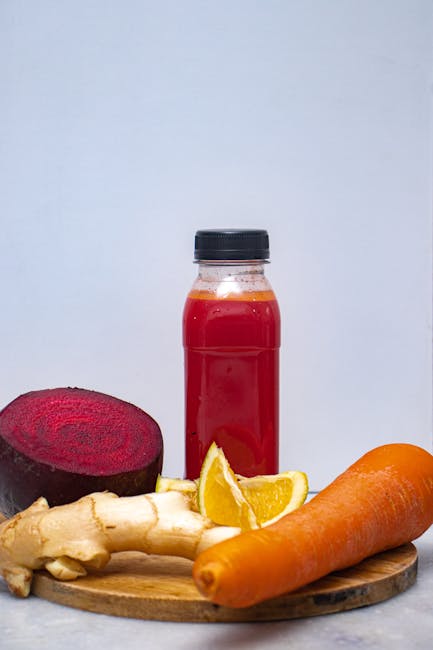The vibrant crimson flesh and sweet juice of watermelon have captivated palates across the globe for millennia. While pinpointing the exact origin of watermelon is difficult, evidence suggests its cultivation began in Northeast Africa, possibly in the area of present-day northeastern Libya, over 4,000 years ago. Ancient Egyptians revered the fruit, depicting it in hieroglyphics and even placing it in tombs as offerings for the afterlife. Archaeological finds have revealed watermelon seeds dating back to the 2nd millennium BC, solidifying its historical significance.
From its African roots, watermelon spread along trade routes, eventually reaching India and China. Its cultivation and consumption became widespread, adapting to various climates and integrating into diverse culinary traditions. In China, for example, watermelon is often served chilled during the summer months, a refreshing counterpoint to the intense heat, a tradition that has endured for centuries. The fruit’s journey continued westward, making its way to Europe via the Mediterranean during the Middle Ages and then to the Americas with European colonization. Today, it’s a global commodity, with China being the world’s largest producer, accounting for over 70% of the global harvest.
The versatility of watermelon extends beyond simply eating it fresh. Its juice has been utilized for centuries in various beverages and culinary applications. Watermelon juice is naturally sweet and hydrating, making it an ideal base for refreshing smoothies and summer drinks. Its high water content (around 92%) contributes to its cooling effect, while its natural sugars provide a satisfying sweetness. The rise in popularity of health-conscious lifestyles has further boosted watermelon’s appeal. Statistics show a steady increase in the consumption of fruit-based smoothies, driven by a desire for quick, convenient, and nutritious meals and snacks. This growing trend has led to a surge in creative recipes, including the delightfully simple yet refreshing watermelon smoothie – a modern take on an ancient fruit’s versatility.
This recipe celebrates the long and rich history of watermelon, transforming this iconic fruit into a modern, refreshing beverage. We will explore the simple steps to create a delicious, healthy, and undeniably summery watermelon smoothie, a perfect blend of taste, tradition, and contemporary health consciousness. Prepare to unlock the simple pleasure of a truly refreshing treat, rooted in thousands of years of culinary history.
Ingredients and Measurements
This refreshing watermelon smoothie recipe relies on fresh, high-quality ingredients for the best flavor and texture. Precise measurements are key to achieving the perfect consistency, so please use a kitchen scale for the most accurate results, especially when dealing with the watermelon. However, if you don’t have a scale, accurate measuring cups and spoons will also suffice.
Watermelon: The star of the show! We’ll be using approximately 4 cups (480g) of cubed, seedless watermelon. Choose a ripe, sweet watermelon for the best flavor. Avoid watermelons that are overly hard or have soft spots. The ideal watermelon will have a deep red color and be heavy for its size. If you’re using a smaller or larger watermelon, adjust the other ingredients proportionally to maintain the desired consistency. For example, if you use less watermelon, you might need to reduce the liquid.
Liquid: We’ll be using a combination of liquids to provide both hydration and a smooth texture. This recipe calls for 1 cup (240ml) of cold water and ½ cup (120ml) of unsweetened almond milk. Feel free to substitute the almond milk with your preferred milk alternative, such as soy milk, oat milk, or coconut milk. If you prefer a thicker smoothie, reduce the liquid by ¼ cup. Conversely, for a thinner smoothie, add another ¼ cup.
Lime Juice: A squeeze of fresh lime juice brightens the sweetness of the watermelon and adds a delightful tang. We recommend using the juice of one medium-sized lime (approximately 2 tablespoons or 30ml). Freshly squeezed lime juice is always best, but bottled lime juice can be used in a pinch. However, be mindful that bottled juice may have added sugars or preservatives.
Mint Leaves: A small handful (about 10-12 leaves) of fresh mint leaves adds a refreshing herbaceous note to the smoothie. Avoid using too much mint, as it can overpower the watermelon flavor. If you don’t have fresh mint, you can omit it altogether or substitute with a few drops of mint extract (use sparingly!).
Optional Sweetener: This recipe is naturally sweet due to the watermelon, but if you prefer a sweeter smoothie, you can add a touch of sweetener. We suggest starting with 1 tablespoon (15g) of honey or maple syrup and adding more to taste. Be cautious when adding sweeteners, as it’s easy to over-sweeten the smoothie, especially if your watermelon is already very sweet.
Ice Cubes: Finally, add 1 cup (approximately 150g) of ice cubes to the blender. The quantity of ice may need to be adjusted depending on the consistency of your watermelon and the desired thickness of the smoothie. Start with less ice and add more gradually until you reach the desired consistency to avoid an overly icy smoothie.
Remember to always wash and thoroughly clean all your produce before use. Enjoy your delicious and refreshing watermelon smoothie!
Preparation Phase (includes washing and cutting watermelon)
Before you begin crafting your refreshing watermelon smoothie, meticulous preparation is key to achieving the optimal taste and texture. This phase focuses on properly washing and cutting your watermelon to ensure a smooth, seed-free, and delicious end product. We’ll be using approximately 4 cups of cubed watermelon for this recipe, but feel free to adjust based on your desired smoothie volume.
Washing the Watermelon: Begin by thoroughly rinsing your watermelon under cool, running water. It’s crucial to remove any dirt, pesticides, or debris from the rind. Use a firm vegetable brush to gently scrub the entire surface, paying close attention to the crevices and stem end. Any lingering residue can impact the flavor of your smoothie. After washing, pat the watermelon dry with a clean kitchen towel or paper towels. This step helps prevent excess water from diluting your smoothie.
Cutting the Watermelon: Once the watermelon is clean and dry, it’s time to cut it into manageable pieces. First, slice the watermelon in half lengthwise. Then, using a sharp knife, cut each half into smaller, roughly 2-inch thick slices. A sharp knife is essential for clean cuts and prevents the watermelon from becoming bruised or ragged, which can affect its texture in the final smoothie. If you are using a particularly large watermelon, you can further divide the slices into smaller wedges for easier handling.
Removing the Rind and Seeds: This step requires some patience but is critical for a smooth, enjoyable smoothie. Using your sharp knife, carefully cut away the rind from each slice. Work slowly and deliberately to avoid accidentally cutting yourself. Once the rind is removed, you’ll be left with the sweet, red watermelon flesh. Next, remove the seeds. You can do this by carefully scooping them out with a spoon or by cutting them out with your knife. For a completely seed-free smoothie, thorough seed removal is necessary. Don’t worry about getting every single tiny seed; a few stray ones won’t significantly impact the final product.
Cubing the Watermelon: Finally, cut the watermelon flesh into small, roughly 1-inch cubes. Consistent sizing ensures even blending and prevents larger chunks from remaining in your smoothie. The size of the cubes can be adjusted slightly based on your blender’s power, but keeping them relatively small will always provide the best results. Once cubed, you can measure out the 4 cups needed for the recipe. If you have extra watermelon, you can store it in an airtight container in the refrigerator for future use (it’s best used within 2-3 days).
Professional Recommendation: For optimal flavor and texture, choose a ripe, sweet watermelon. A ripe watermelon will have a deep red color, a firm but slightly yielding texture, and a sweet aroma. Avoid watermelons with bruises, cuts, or soft spots.
Blending Instructions
Creating the perfect refreshing watermelon smoothie requires a bit of technique to achieve the ideal texture and consistency. Follow these detailed instructions for a flawlessly blended beverage.
Preparation is key. Before you begin blending, ensure all your ingredients are properly prepared. This includes thoroughly washing the watermelon and removing the rind. Cut the watermelon into roughly 1-inch cubes. This will help the blender process the fruit efficiently and prevent large chunks from remaining. If using frozen watermelon, ensure it’s not clumped together; break it apart into smaller pieces for easier blending.
Ingredient Measurement: For optimal results, precisely measure your ingredients. This recipe calls for 4 cups of cubed watermelon (approximately 1.5kg or 3.3 lbs). Add 1 cup (240ml) of cold water or coconut water for a lighter consistency. If you prefer a thicker smoothie, reduce the liquid to ¾ cup (180ml). You can adjust this based on your preferred thickness. For added sweetness, add 2 tablespoons of honey or maple syrup; taste and adjust to your preference. A squeeze of fresh lime juice (about ½ a lime) will enhance the flavor and add a refreshing zing. Finally, add a handful (about 1 cup) of ice cubes for a chilled, icy smoothie.
Blending Process: Begin by adding the watermelon cubes and liquid to your blender. If using a high-powered blender, you can add all the ingredients at once. For less powerful blenders, it’s recommended to add the ingredients in stages to avoid overloading the motor. Start by blending on a low speed for about 15 seconds to break down the watermelon chunks. Gradually increase the speed to medium and then high, blending for another 30-45 seconds, or until the mixture is completely smooth and creamy.
Achieving the Right Consistency: Pay close attention to the texture. If the smoothie is too thick, add a little more water or coconut water, a tablespoon at a time, until you reach your desired consistency. If it’s too thin, add a few more ice cubes and blend again briefly. A well-blended smoothie should be smooth with no visible chunks of watermelon.
Troubleshooting: If your blender struggles to process the watermelon, stop the blender and use a spatula to push the ingredients down the sides of the blender jar. Avoid overloading your blender; this can damage the motor and lead to inconsistent blending. If you’re using a smaller blender, you may need to blend the ingredients in batches.
Finishing Touches: Once blended to perfection, pour your refreshing watermelon smoothie into a glass. Garnish with a few slices of fresh watermelon, a sprig of mint, or a lime wedge for an extra touch of elegance. Serve immediately and enjoy the delicious, cool refreshment!
Important Note: Always ensure the blender lid is securely fastened before blending to prevent spills. Use caution when handling sharp blades and hot liquids.
Serving Suggestions (e.g., garnishes, glassware)
The presentation of your refreshing watermelon smoothie is just as important as its taste! A thoughtfully chosen glass and garnish can elevate this simple treat to something truly special. Consider your audience and the overall aesthetic you’re aiming for when making your selections.
Glassware: The best glassware for a watermelon smoothie depends on the occasion. For a casual, everyday drink, a simple tall glass (16-20 oz) works perfectly. The height allows for a visually appealing layered effect if you choose to add other ingredients. For a more sophisticated presentation, consider using a hurricane glass or a stemmed glass. These options offer a more elegant feel and can be particularly stunning with a carefully chosen garnish.
Garnishes: Garnishes should complement the watermelon’s natural sweetness and vibrancy. Avoid anything too overpowering that might mask the delicate flavor of the smoothie. A few simple options can make a big difference.
Fresh Mint Sprig: A classic and refreshing choice. Use one or two small sprigs, gently washing them beforehand. Tuck the sprig into the glass after pouring the smoothie. Avoid using too much mint, as it can overpower the watermelon flavor.
Watermelon Wedge or Ball: A simple yet effective garnish. Cut a small, bite-sized wedge of fresh watermelon and place it on the rim of the glass, or carefully carve a small watermelon ball using a melon baller and place it in the smoothie itself. Ensure the watermelon is chilled for optimal visual appeal and taste. Use approximately 1-2 inches of watermelon, depending on the size of your glass.
Lime Wedge: A squeeze of fresh lime juice adds a touch of tartness that beautifully balances the sweetness of the watermelon. Serve a small lime wedge (about 1/8 of a lime) on the rim of the glass for guests to add as desired. This is a great option for those who prefer a slightly more tangy smoothie.
Edible Flowers: For a truly elegant touch, consider adding edible flowers like pansies or nasturtiums. These add a pop of color and subtle flavor. Use 1-2 small flowers per glass. Ensure the flowers are sourced from a reputable supplier and are safe for consumption. Wash them gently before using.
Chia Seeds: For a texturally interesting garnish, sprinkle a teaspoon of chia seeds on top of the smoothie. They add a slight crunch and visual interest. Use sparingly, as too many chia seeds can make the smoothie feel gritty.
Presentation Tips: Regardless of your chosen garnish, always ensure the glass is clean and dry before pouring the smoothie. Consider chilling the glasses beforehand for an extra-refreshing experience. A simple straw adds functionality and enhances the overall aesthetic. Remember, less is often more when it comes to garnishes – a few well-chosen elements are far more impactful than an overabundance.
Tips and Tricks for the Perfect Watermelon Smoothie
Achieving the ultimate refreshing watermelon smoothie involves more than just blending the ingredients. Here are some tips and tricks to elevate your smoothie game and ensure a consistently delicious result:
Chilling Your Ingredients: This is crucial for a truly refreshing smoothie. Start by chilling your watermelon for at least 30 minutes before blending. A colder watermelon will result in a thicker, colder smoothie that won’t melt as quickly. Similarly, chill any other liquid ingredients, such as milk or yogurt, beforehand. Ice cubes are also essential, but we’ll discuss quantity below.
Adjusting Sweetness: Watermelon’s sweetness can vary depending on the variety and ripeness. Taste your watermelon before blending. If it’s not sweet enough, you can adjust the sweetness with a touch of honey, agave nectar, or maple syrup. Start with 1-2 tablespoons and add more to taste. Avoid adding too much sweetener at once, as it’s easier to add more than to take it away. Consider the sweetness of other ingredients as well; if you’re adding something already sweet like mango, you might need less added sugar.
Optimizing Ice Quantity: The amount of ice you use significantly impacts the smoothie’s texture. Too little ice, and you’ll have a watery smoothie. Too much, and it will be icy and difficult to blend properly. A good starting point is 1 cup of ice for every 2 cups of cubed watermelon. Adjust based on your desired consistency and the initial coldness of your watermelon. If your watermelon is already very cold, you might need less ice.
Enhancing Flavor and Texture: Experiment with adding other ingredients to enhance the flavor and texture of your smoothie. A squeeze of lime juice (about ½ a lime) can add a bright, refreshing zing. A few mint leaves can introduce a cool, herbaceous note. For a creamier texture, add a ½ cup of plain Greek yogurt or coconut cream. Remember to adjust sweetness if adding sweeter ingredients like mango or banana.
Blending Technique: For the smoothest result, add your liquid ingredients first, followed by the ice, and then the watermelon. This helps prevent the blender from getting jammed. Blend on a high speed until completely smooth, stopping to scrape down the sides as needed. If you have a high-powered blender, you might be able to blend everything at once, but always start with the liquids first.
Serving Suggestions: Serve your smoothie immediately for the best flavor and texture. Garnish with a few watermelon wedges, fresh mint leaves, or a sprinkle of chia seeds for an extra touch of visual appeal and added nutritional benefits. For a fun twist, try freezing some of the smoothie in popsicle molds for a refreshing treat.
Troubleshooting: If your smoothie is too watery, add more ice or frozen watermelon chunks. If it’s too thick, add a little more liquid, such as water, milk, or juice. If it’s too sweet, add a splash of lime juice or a little more watermelon to balance the flavor.
Nutritional Information (per serving)
This refreshing watermelon smoothie recipe, made with approximately 4 cups of cubed watermelon (about 400g), 1/2 cup plain Greek yogurt (about 113g), 1/4 cup water (about 60ml), and a squeeze of lime juice (about 5ml), yields approximately two servings. The nutritional information provided below is an estimate and may vary slightly depending on the specific ingredients used and their individual nutrient content. It’s crucial to remember that these figures are approximate and should be considered as a guideline. For precise nutritional information, you should use a nutrition calculator with the exact brands and quantities of your ingredients.
Approximate Nutritional Information per serving (1/2 recipe):
- Calories: Approximately 150-180 calories. This calorie count can fluctuate based on the sweetness of the watermelon and the fat content of the yogurt. Choosing a lower-fat Greek yogurt will reduce the overall calorie count.
- Total Fat: 2-4g. The majority of the fat comes from the Greek yogurt. Opting for non-fat or low-fat Greek yogurt can significantly lower this value.
- Saturated Fat: 1-2g. Limiting saturated fat intake is important for heart health. The type of yogurt used influences this amount.
- Cholesterol: 5-10mg. Cholesterol content is primarily determined by the yogurt.
- Sodium: 5-15mg. Sodium content is generally low in this recipe unless you add extra salt.
- Total Carbohydrate: 30-35g. Watermelon is a naturally sweet fruit, contributing significantly to the carbohydrate content. This includes both sugars and fiber.
- Dietary Fiber: 1-2g. Fiber is essential for digestive health. The fiber content is primarily derived from the watermelon and yogurt.
- Total Sugars: 25-30g. Most of the sugar is naturally occurring fruit sugar from the watermelon. Be mindful of your sugar intake if you have diabetes or are managing your blood sugar levels.
- Protein: 6-8g. The protein content is mainly due to the Greek yogurt. Choosing a higher-protein yogurt will increase this value.
- Vitamin C: A significant source, contributing to immune function and antioxidant properties. The exact amount varies based on watermelon ripeness.
- Potassium: A good source, which is important for maintaining healthy blood pressure.
Important Considerations:
Portion Control: While this smoothie is healthy, it’s still important to be mindful of portion sizes. Adjust the recipe accordingly to fit your individual dietary needs and calorie goals.
Ingredient Variations: Adding other ingredients, such as berries, spinach, or other fruits, will alter the nutritional content. Always recalculate the nutritional information if you make significant changes to the recipe.
Allergies and Intolerances: This recipe contains dairy due to the use of Greek yogurt. Individuals with dairy allergies or intolerances should substitute with a dairy-free alternative, such as coconut yogurt or almond yogurt, and be aware that the nutritional values will change.
Disclaimer: This nutritional information is an estimate and should not be considered a substitute for professional nutritional advice. Consult a registered dietitian or healthcare professional for personalized dietary guidance.
Recommendations for Refreshing Watermelon Smoothie
This refreshing watermelon smoothie is a perfect treat for a hot day or a healthy anytime snack. To maximize its deliciousness and nutritional benefits, consider the following recommendations:
Serving Suggestions: This smoothie is delightful on its own, but you can elevate the experience with a few simple additions. A sprinkle of fresh mint leaves adds a delightful aromatic touch and complements the sweetness of the watermelon perfectly. For a thicker texture, consider adding a scoop of vanilla Greek yogurt or a handful of ice cubes before blending. A squeeze of lime juice can provide a zesty contrast to the sweetness, adding a refreshing tang. For a more decadent treat, a drizzle of honey or agave nectar can enhance the sweetness, but remember to adjust the amount according to your preference and dietary needs. Garnish with a watermelon wedge or a few mint sprigs for an attractive presentation.
Storage Conditions: For optimal freshness and flavor, it’s best to consume the watermelon smoothie immediately after preparation. However, if you have leftovers, store them in an airtight container in the refrigerator. The smoothie should be consumed within 24 hours of preparation to prevent bacterial growth and maintain its quality. Avoid freezing the smoothie, as this can alter its texture and flavor.
Complementary Dishes: This light and refreshing smoothie pairs well with various dishes. It makes a fantastic accompaniment to a light brunch or lunch, complementing dishes like avocado toast, a simple salad with feta cheese and vinaigrette, or a fruit and yogurt parfait. Its refreshing nature also makes it an ideal post-workout recovery drink, or a healthy dessert option after a light meal. For a more substantial meal, consider pairing it with a grilled chicken salad or a vegetarian wrap.
Nutritional Information (Approximate per serving, based on a standard recipe using 4 cups cubed watermelon): The exact nutritional content will vary slightly depending on the specific ingredients and quantities used. However, a typical serving will contain approximately:
Calories: Around 150-200 calories (depending on additions like yogurt or sweetener).
Carbohydrates: Approximately 30-40 grams.
Protein: Low unless you add protein sources like yogurt or protein powder (add approximately 10-20 grams with Greek yogurt).
Fat: Very low, unless you add ingredients such as nuts or seeds.
Vitamins and Minerals: Rich in Vitamin C, Vitamin A, Potassium, and other essential nutrients. Remember that the nutritional value can be enhanced by adding other fruits, vegetables or supplements like protein powder.
Important Note: This nutritional information is an estimate and may vary based on the specific ingredients and quantities used. Always consult a nutritionist or dietitian for personalized dietary advice.
Enjoy your refreshing and healthy watermelon smoothie!





